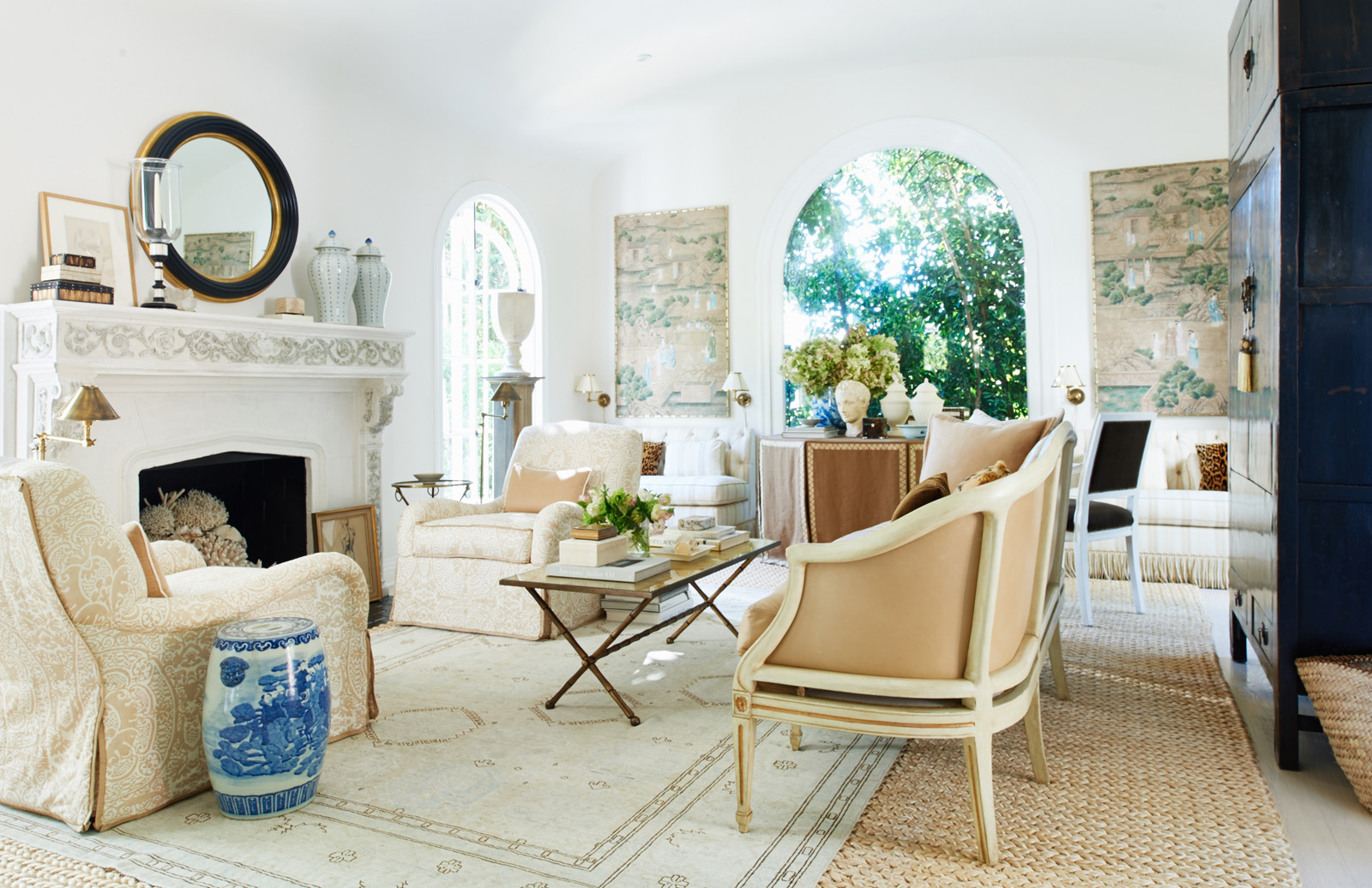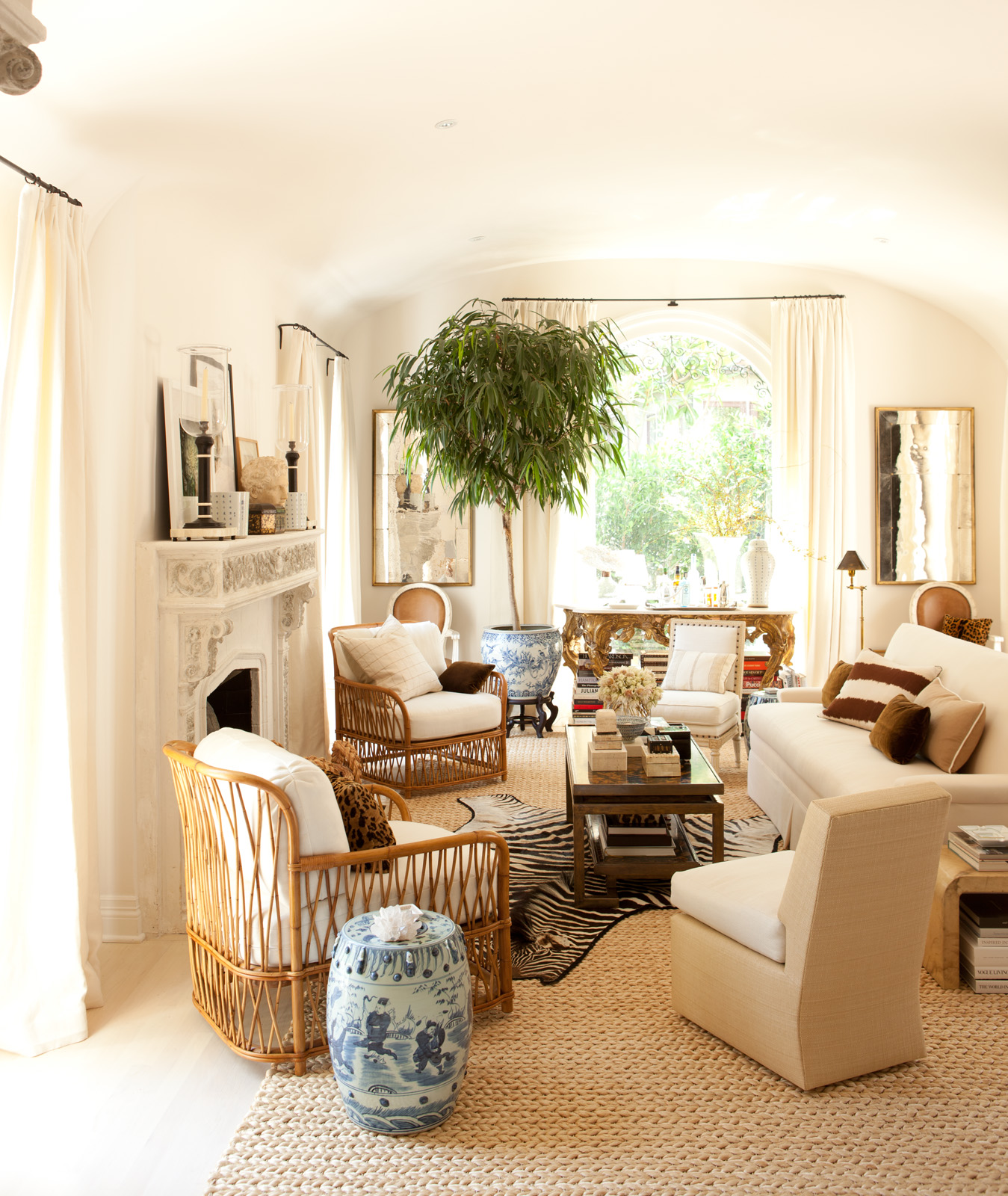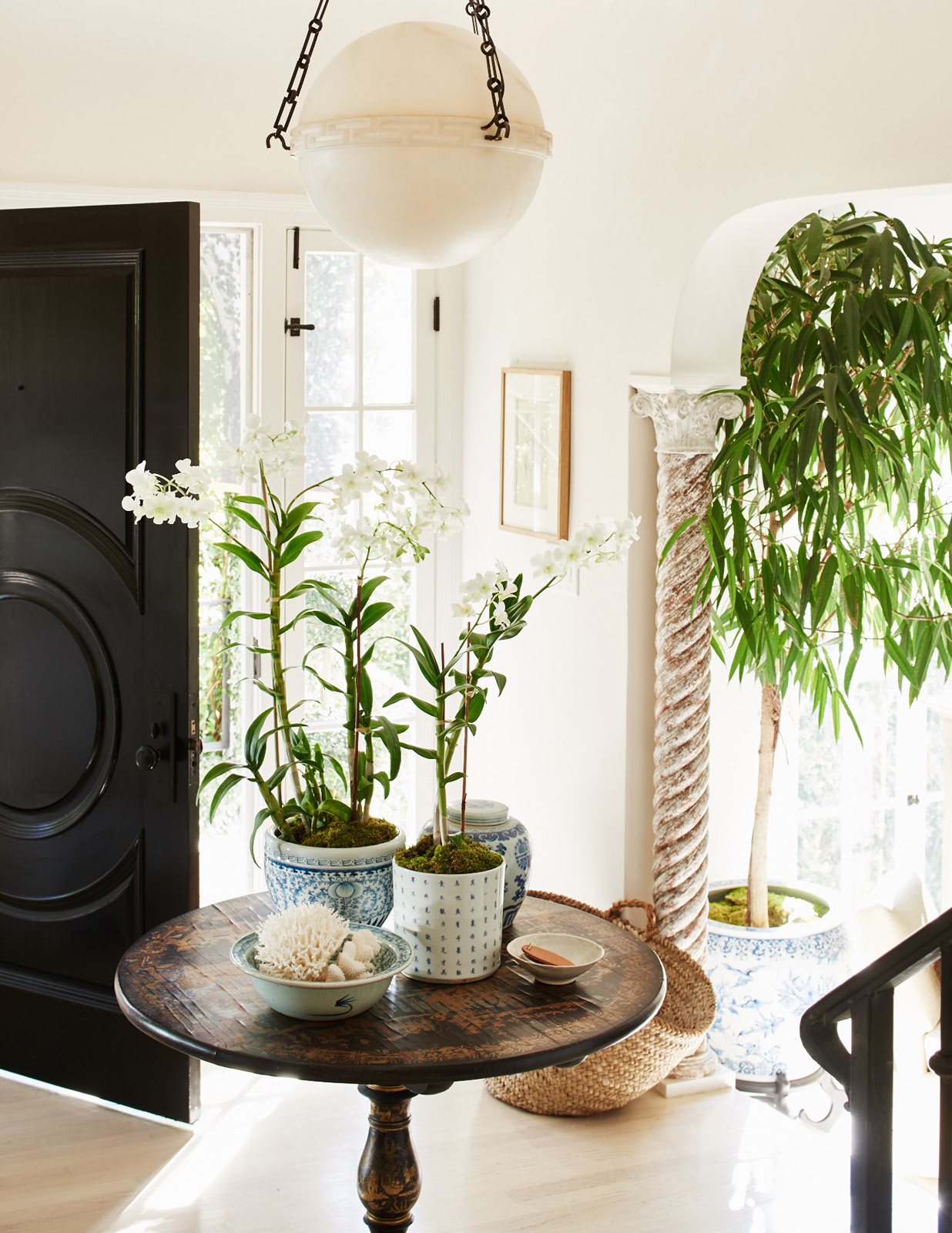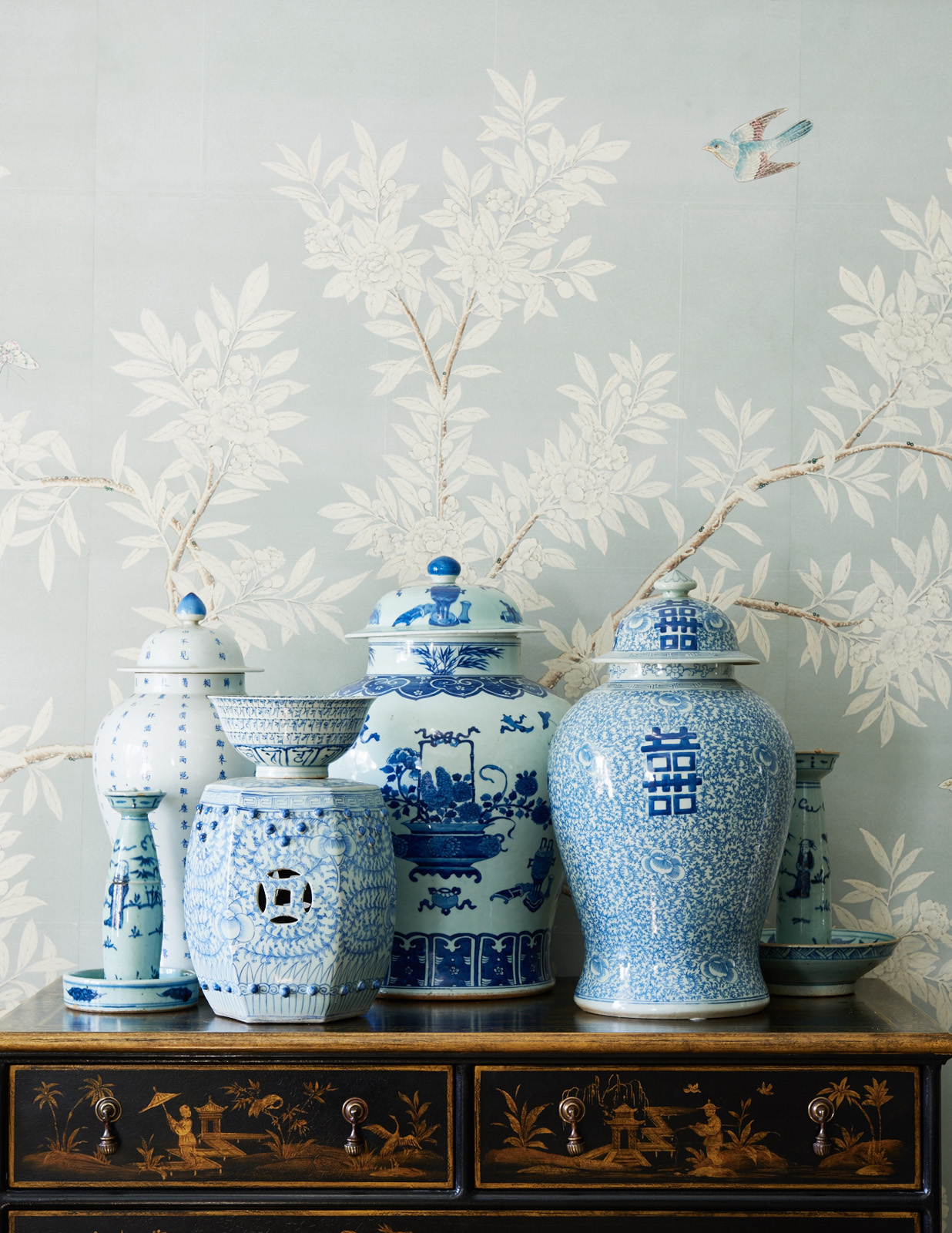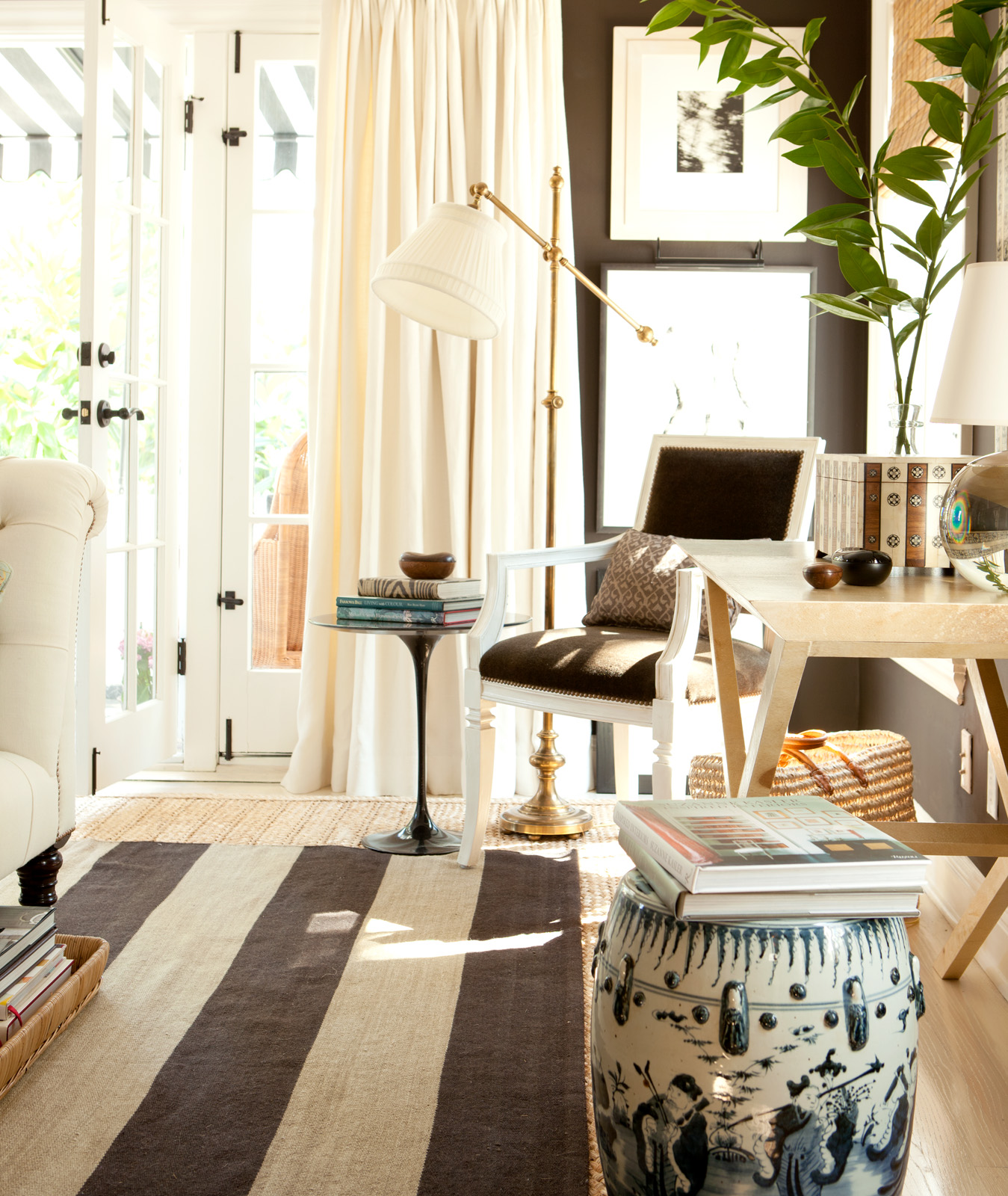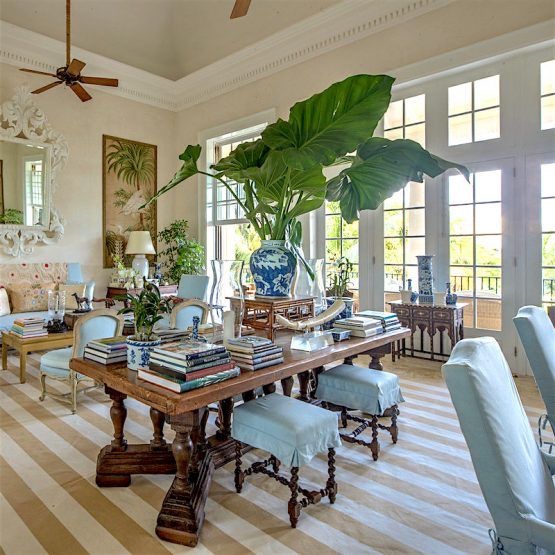Blue and White Forever
There I was, innocently watching “The Man Who Invented Christmas,” munching Junior Mints, possibly dozing a little, and suddenly, right there in the 19th Century screen-home of Charles Dickens, I spied the most gorgeous blue and white Chinese ginger jar ever. I even said to Shane, “Look at that ginger jar.” The magnitude of the moment escaped him, because what kind of weirdo is spotting ginger jars in a movie, but I was struck at how that smashing Chinese jar was perfectly at home among the 19th Century accoutrements of the imaginary, and decidedly English, Dickens home. I put a pin in it for later consideration and polished off my Junior Mints.
Chinese Hand-Painted Ginger Jars
A pair of early 20th century hand-painted covered ginger jars auctioned at ebth.com
Having grown up in Baton Rouge, I am no stranger to good design. Like many Southern cities, Baton Rouge has its own bourgeoisie, a fraternity of the effortlessly polished and chic. Somehow, through virtually no effort of my own, I had the good fortune to be exposed to Baton Rouge’s best. Very like the Dickenses, the Baton Rouge Bourgeoisie nonchalantly incorporated Chinese blue and white pottery into their traditional, completely timeless, and history-rich homes. Still do. For me, it is a familiar and well-loved staple of interior design. I have known those, however, who are completely oblivious to its charms. My realtor, for example. And my hair stylist. (Midwesterners, both. Could it be a Southern thing?)
Perry Newman, extreme dog lover, contractor extraordinaire, and very best friend of mine (and not a Southerner), noticed my penchant for blue and white Chinese pottery when he spearheaded a remodel on my Utah house. I’d never actually analyzed my fondness for it, but he noticed it was a repeated element in my design aesthetic, along with my sisal rugs. He’s got an eye, that Perry. He was the first to give me an abbreviated biography of the pottery as well. After (freakishly) spotting the Dickens ginger jar, I decided to dig a little deeper.
Blue and white Chinese pottery, then. Classic and omnipresent, at least in some circles. Also, quite versatile. Plus, could there be an accessory more timeless? To wit, George Washington was a fan. The pottery, understated and dignified, is the gentleman of accessories. It compliments and enhances; never dominates or screams. Sometimes it sets the scheme; other times it behaves as a neutral. But always, it is elegant and appropriate. And so Dickensonian.
I have a theory about the lasting quality of this particular accessory. It has to do with history.
In fact, some iteration of blue and white pottery has been produced in China since at least the 13th century, with designs and production varying according to dynasty. The original use was practical, unglamorous, and utilitarian. Storage. The Chinese, apparently, couldn’t resist the urge to pretty it up, recording nature, folklore, and everyday life in cobalt oxide, an element once considered more precious than gold.
Europeans, heady with sea travel and the expanding globe, began trading with China in a big way in the 16th Century. Inevitably, the blue and white pottery was introduced to the European continent and assimilated into classic design. Picture it: blue and white ginger jars atop a Federal style commode - in vogue since the 1500s - the very definition of timeless. Of course, the pottery, and the Asian aesthetic, was enthusiastically embraced and copied by the English, et voilà - Chinoiserie was born.
With the American Revolution, pieces began to filter into the New World, vis à vis the likes of General George Washington and his curious penchant for dinnerware. Chinese pottery was functional and fashionable, and spoke to the wealth of its owner, according to historian Matthew C. Inghram of George Mason University.
“The wide array of ceramics and Chinese porcelains that made their way to George Washington's residence at Mount Vernon were a testament not only to his own personal taste but also reflected a popular fashion among the American elite. Elegantly furnished dining and tea tables were common among the aristocracy in eighteenth-century England and France, and prosperous Americans eagerly imported similar luxury goods both before and after the Revolution.”
Design guru and tastemaker Mark D. Sikes admits to a love affair with the Chinese blue and whites. His gorgeous book, BEAUTIFUL, All-American Decorating and Timeless Style, is a case study in blue and white. Inside the front cover is a vignette from his own home, featuring all shapes and sizes of Chinese blue and white pieces. The aptly named “Blue and White Forever” chapter, which I borrowed for this post, celebrates the blue and white color combination in all things decor, with an ode to his signature stripes, and the Chinese porcelains Mr. Sikes so loves. He did include a chapter on neutrals, MDS style. Alas, even it contains well-placed blue and white porcelain. Clearly, this pottery is uniquely amenable to most styles and sensibilities.
Says the One Kings Lane Blog of the Chinese ginger jar, “Classic, iconic, and possessing a real sense of history, ginger jars are one of decor’s most well-known vessels. Originally conceived as storage containers in ancient China, they took on a more decorative function once they began to be imported to Europe during the 17th century’s fervor for all things chinoiserie."
China to Europe; Europe to America. America to the wild frontier.
History itself, then, perpetuated the classic versatility of Chinese pottery. No other objet d’art is as timeless and ubiquitous. For centuries, the English and French - if not the whole of Europe - have integrated Chinese pottery into their design vernacular. The very birthplace of that layered, global aesthetic is also, incidentally, the birthplace of America. How could it not be a staple of American design?
Happily, one does not need a second mortgage to afford blue and white pieces. Of course, authentic antiques are available for a small fortune, if one is so inclined, but good reproductions and shameless knock-offs make this design tradition widely available in today’s market. Whatever the budget, it’s never a bad investment.
Blue and white forever, indeed.
